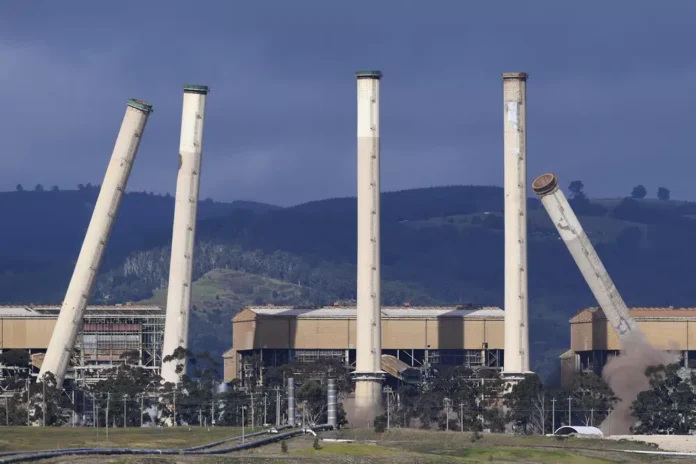CANBERRA (London Post with AP) By Dr. Majid Khan– The Australian government has taken a big step towards implementing a major climate policy that will force the biggest greenhouse gas polluters to cut their emissions, with a small green party pledging its support on Monday. .
The centre-left Labor government said reforming its so-called safeguards mechanism was essential to achieving Australia’s target of reducing emissions by 43% by the end of 2010 from low levels in 2005. says. The reform will cap the country’s emissions and force Australia’s 215 largest polluting factories to reduce their emissions over time.
The Climate Council, a leading climate communicator, described the reform as her first Australian law in a decade to regulate greenhouse gas pollution.
With the support of 11 Green Party senators, the government can push reforms through the Senate with only the support of her two neutral or independent senators. Green Party leader Adam Band said the emissions “hard cap” means half of the 116 proposed new coal and gas projects in Australia will not go through.
Permissible greenhouse gas emissions under the cap have not been published. The cap will be lowered over time as polluters reduce their emissions.
“The Greens have won big on oil and gas through negotiations,” Band told reporters, confirming the party’s support for reform.
The law passed the House of Commons on Monday, with Labor holding a majority of seats. Prime Minister Anthony Albanese said the safeguard mechanism is “a means to meet our commitment of 43% reduction by 2030″.
Climate and Energy Secretary Chris Bowen said without the mechanism, Australia would only be able to reduce its emissions by 35% in 10 years.
“Today we took a big step forward in getting Congress to pass reforms to the Safeguards Mechanism.
The reform will reduce Australia’s greenhouse gas emissions by 205 million tons (226 million US tons) by 2030. This equates to two-thirds of his Australian cars being removed from the road at the same time.
Large polluters can purchase carbon credits to meet their emission reduction targets. But polluters who use carbon credits to achieve 30% or more of their reductions need to explain why they are not doing more to reduce their emissions. Opposition spokesman Ted O’Brien on climate change and energy said he opposed the reform and said limiting emissions would drive Australian industrial investment abroad to China and India.
“This is not a plan to decarbonise the Australian economy, it is a plan to deindustrialise,” O’Brien said.
Opposition conservatives created his safeguard mechanism when he was in power in 2016. But the emission limits were so high that the 215 major polluters, which account for 30% of Australia’s emissions, were able to increase their emissions by 4%.
The previous government had set an unambitious target of reducing Australia’s emissions by 26% by 2030, from a minimum of 28% in 2005, he said. The Climate Council hailed the deal between the Greens and government as a historic deal.
“This is the first reform of Congress in a decade to truly reduce pollution,” Climate Council CEO Amanda Mackenzie said in a statement.
The Australian Institute, a left-wing political think tank, criticized the reforms as allowing for some new fossil fuel projects, albeit fewer than the current mechanisms.
Glenn Walker, spokesman for Greenpeace Australia Pacific, said the most important task for the Australian parliament was to ban new fossil fuel mining in favor of a clean and future-proof industry.
Monday, April 29, 2024
More
© London Post, All Rights Reserved by Independent Media Group UK Limited.






